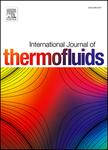版权所有:内蒙古大学图书馆 技术提供:维普资讯• 智图
内蒙古自治区呼和浩特市赛罕区大学西街235号 邮编: 010021

作者机构:Physics Department Al-Zaytoonah University of Jordan P.O. Box 130 Amman11733 Jordan Institute of Nanotechnology Jordan University of Science and Technology P.O. Box 3030 Irbid22110 Jordan Physics Department Faculty of Science Jordan University of Science and Technology P.O. Box 3030 Irbid22110 Jordan Smart-Lab Dicle University Diyarbakir Turkey
出 版 物:《International Journal of Thermofluids》 (Int. J. Thermofluids)
年 卷 期:2023年第20卷
核心收录:
主 题:Electrochemical deposition
摘 要:A nanocomposite (nanoclay/conductive polymer) was prepared by a template-free method for supercapacitor applications. Halloysite Nanotubes (HNTs) were used as a nanoclay material, and synthesized polyaniline (PANI) by ammonium persulfate-initiated polymerization was used as a conductive polymer. The HNTs/PANI nanocomposite was deposited on an indium tin oxide (ITO) coated glass to obtain a working electrode by an electrochemical deposition method. Morphological and structural examination of the HNTs/PANI nanocomposite proved that the PANI nanoparticles were attached to the HNTs surface. The structural analysis demonstrated that the PANI and HNTs crystal size significantly decreased in the HNTs/PANI as a result of the composition of PANI molecules with HNTs structure. The main characteristic bonds and functional groups of HNT, PANI, and HNTs/PANI nanocomposites were determined by FT-IR analysis. Using cyclic voltammetry (CV), the electrochemical performance of the HNTs//PANI nanocomposite electrode was investigated. The specific capacitance values were reported via the CV curves as 264, 230.22, 175.2, and 154.8 F/g at scan rates of 50, 100, 200, and 300 mV/s respectively. The results showed that the specific capacitance at the slow scan rates revealed higher maximum specific capacitance values. © 2023 The Author(s)